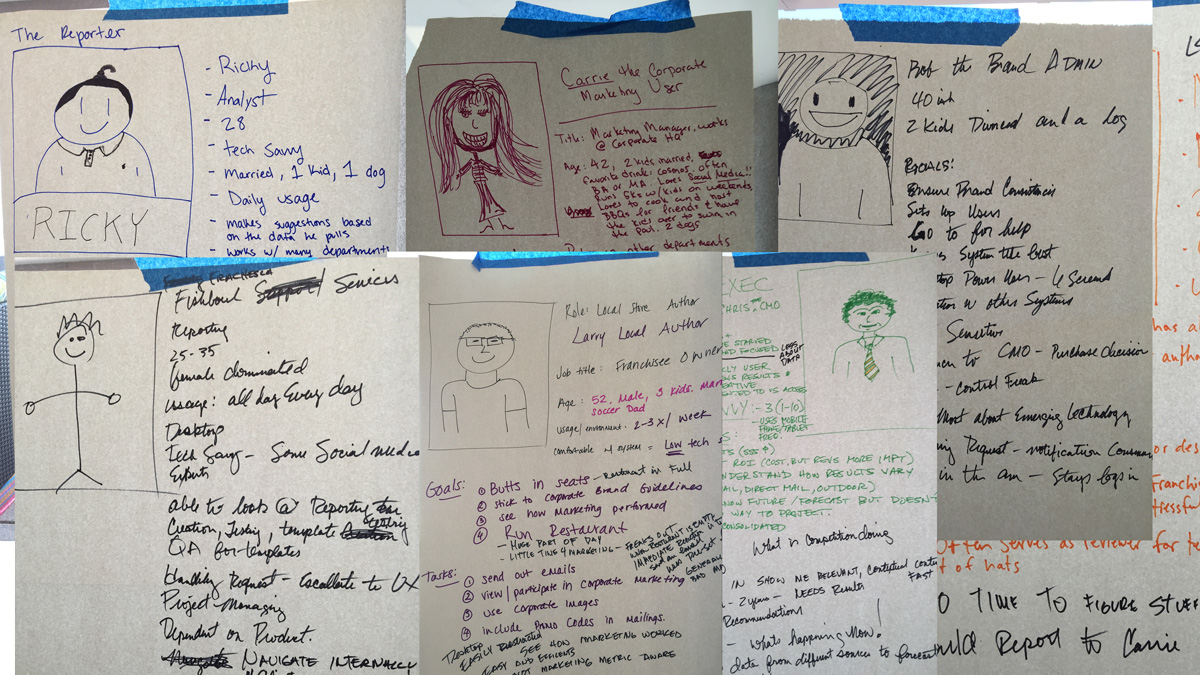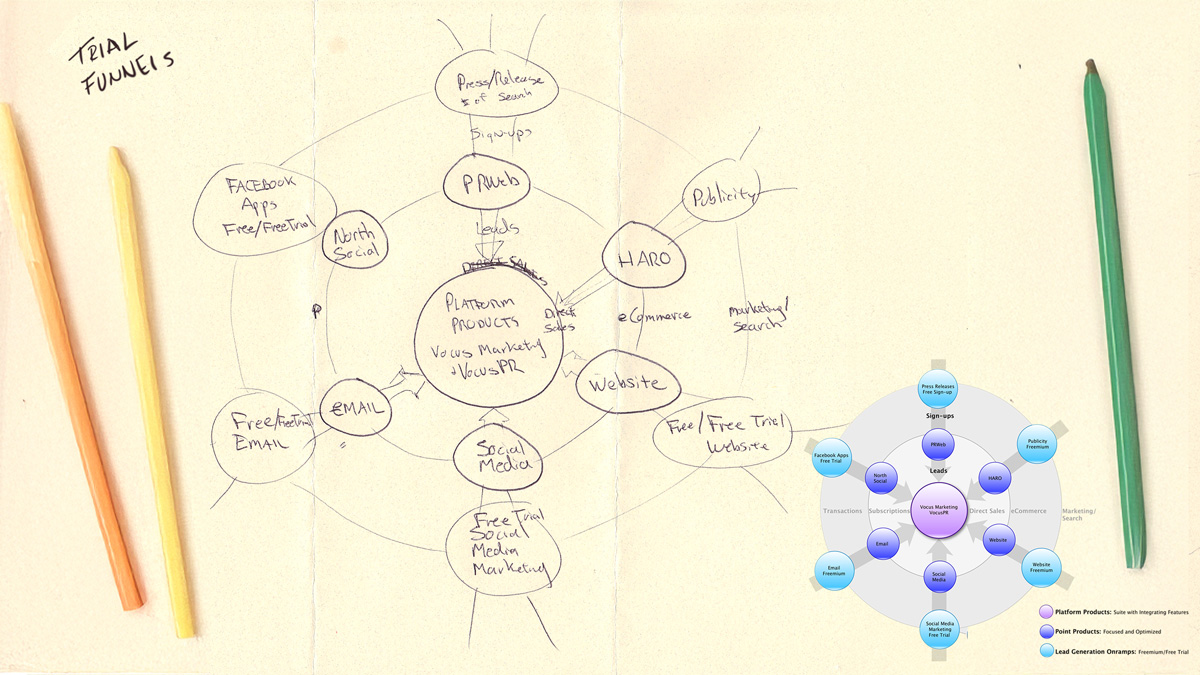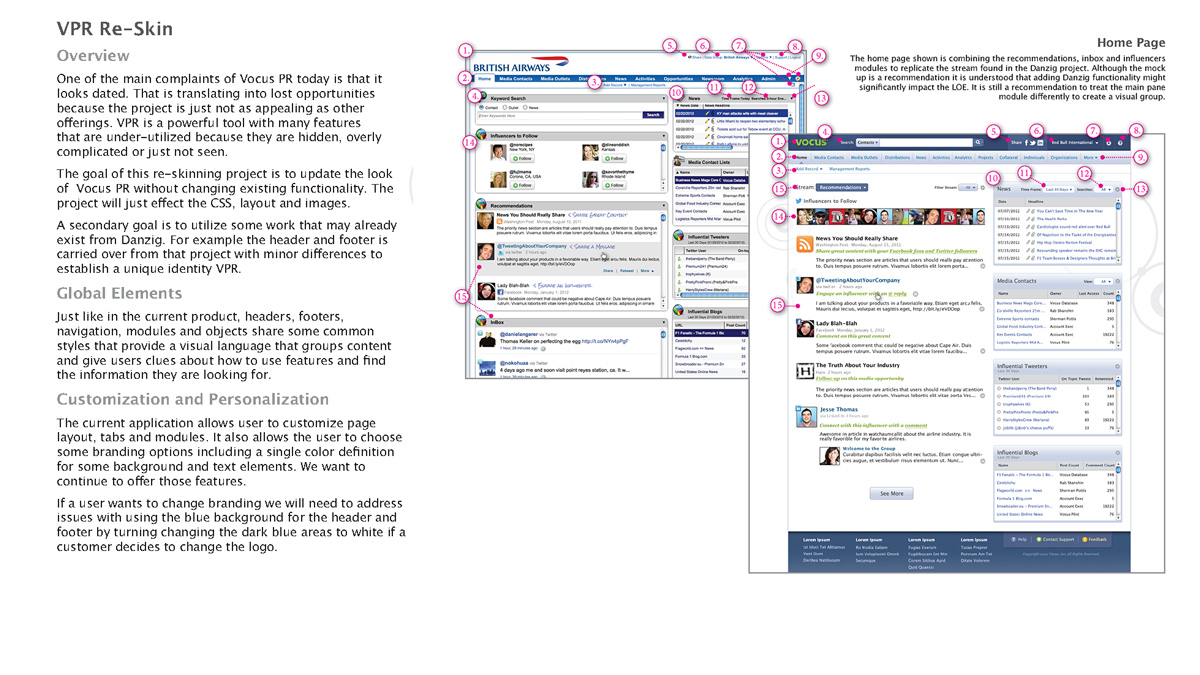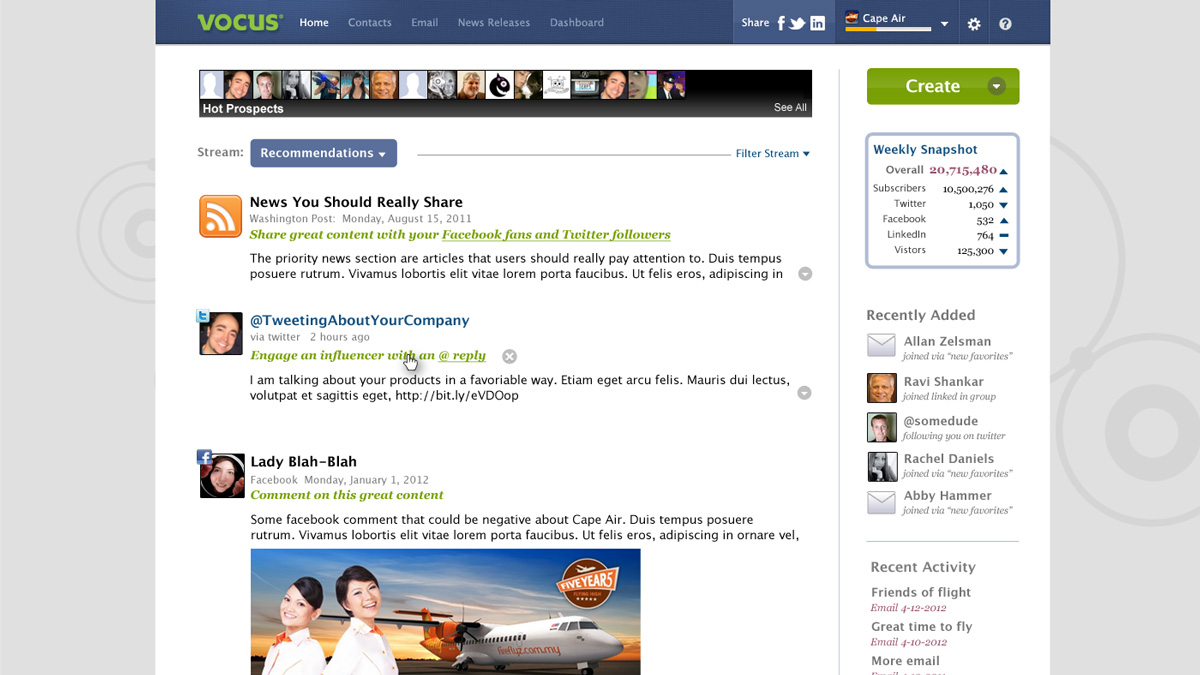
Vocus: Unified Customer Self-Service
UX Director — led vision, roadmap, and release readiness.
At a Glance
Project Overview
- Client: Vocus
- Role: Director of User Experience
- Timeline: 02/2011 – 01/2013
- Team: Scaled from solo UX lead to 4 designers, 5 product owners, and engineering partners.
Tools & Methods
- User-Centered Design
- Journey Mapping & Information Architecture
- Interaction Design & Rapid Prototyping
- Accessibility & Design System Integration
- Collaboration Workshops & Stakeholder Alignment
- Lean UX (two-week discovery–design–validate sprints)
Challenge
- Fragmented self-service across multiple legacy portals created duplicated knowledge bases and inconsistent user patterns.
- Customers struggled to locate answers, often escalating to Support within minutes of search failure.
- Lacked unified analytics or KPIs to measure adoption and guide content improvements.
Understanding how users searched, failed, and escalated informed a new model for unified self-service content and measurable engagement.
Vision & Objectives
- Create a unified customer experience that empowers users to self-serve with confidence while reducing dependency on live support.
- Unify access: Consolidate three portals into one seamless self-service platform.
- Simplify tasks: Streamline key workflows like knowledge lookup, case submission, and account management.
- Increase adoption: Improve discoverability and trust through consistent navigation and feedback.
- Build for scale: Establish reusable design patterns and shared analytics for continuous optimization.
- Empower teams: Create visibility across Product, Support, and Marketing to coordinate the customer journey.
Anchored on clarity, consistency, and measurable outcomes — a foundation that informed later design system initiatives.
Approach
Introduced collaborative frameworks to align product, design, and engineering around measurable customer outcomes.
- Led co-creation workshops connecting Product, Design, and Engineering around shared goals and measurable outcomes.
- Facilitated cross-team retrospectives to align roadmap priorities and reduce rework.
- Established UX research synthesis loops for measurable impact on adoption and retention.
- Partnered with Product and Engineering to define release readiness and adoption milestones.
Fostered a culture of shared ownership — where clarity, trust, and iteration guided every release.
Transformation
- Cross-functional silos gave way to collaborative discovery, rapid iteration, and measurable improvement across the self-service experience.
- Mapped end-to-end user journeys to uncover friction in search, submission, and account flows.
- Validated navigation and hierarchy through rapid prototype cycles and user benchmarks.
- Unified design and pattern libraries to ensure consistency, accessibility, and reusability across products.
- Partnered with engineering to embed accessibility and responsiveness into reusable components.
- Documented design standards that informed future roadmap prioritization and sustained continuous improvement.
Each sprint produced visible, measurable progress — transforming isolated improvements into a unified, scalable self-service platform.
Outcomes
Takeaways
- Co-creation builds clarity: Early collaboration between design, product, and engineering turned alignment into acceleration.
- Design systems are culture, not tools: Shared language and governance mattered more than components alone.
- Accessible design scales naturally: Building inclusively early prevented rework and improved quality.
- Documentation drives momentum: Clear specs and annotated patterns carried progress through team transitions.
- Vision fuels continuity: Keeping the north star visible ensured every sprint moved toward measurable impact.
Vocus proved that unifying systems isn’t just a design problem — it’s a culture shift. Every project since has built on those same principles: clarity, collaboration, and continuous improvement.




